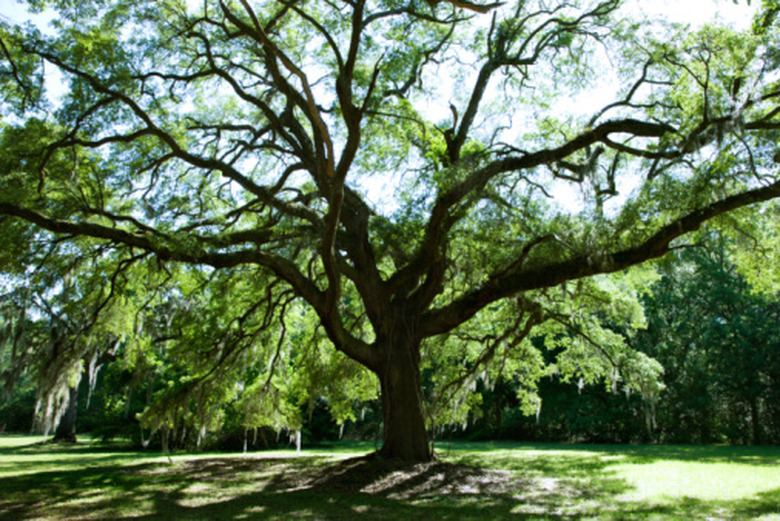Plants Or Trees That Have Deep Roots
Most trees do not develop deep roots, commonly referred to as tap roots, below the tree's trunk. Most trees and plants only develop roots in the top portion of the soil. However, pine and oak trees growing in well-drained soil can develop tap roots.
Northern Pin Oak
Northern pin oak is a member of the Fagaceae family and is also known as jack oak, Hill's oak and upland pin oak. Reaching heights of 69 feet at maturity, this tree is known for the deep root system it develops in a short period of time. For this reason, the Northern pin oak is not easily transplanted. Northern pin oak is most commonly grown for its wood, which is often used to make flooring, furniture, pulp and fuel. A wide variety of wildlife feasts on the acorns of this tree, including deer and squirrel. Northern pin oak is found in the Great Lakes, Wisconsin, Michigan, Illinois, Iowa, Ohio, Indiana, North Dakota and Arkansas.
- Most trees do not develop deep roots, commonly referred to as tap roots, below the tree's trunk.
- However, pine and oak trees growing in well-drained soil can develop tap roots.
Mugo Pine
The southern pine known as mugo pine develops deep roots unless it is planted on shallow, poorly drained soil. This pine is shrub-like and grows to heights of 15 to 25 feet and 15 to 25 feet in diameter, thriving in full sun or partial shade. Mugo pine is also known as Swiss mountain pine and is a member of the Pinaceae family. This pine is most commonly planted as a screen or in highway medians. Transplanting mugo pine is often most successful when the pine is balled and burlapped. Avoid transplanting this pine tree bare-root.
Wild Rose
Wild rose is also known as prickly rose, which is a deciduous shrub that reaches heights of 4 feet. Wild rose develops fine roots in the top of soil and deep roots often extend more than 55 inches. Pink flowers bloom on stems covered with prickles. Wild rose is commonly found in hardwood forests where aspen, paper birch and cottonwood grow. This plant also grows on hillsides, rocky ledges, in bogs and thickets and along roadsides. Native Americans often used wild rose in teas to treat stomach ailments and sore throats. Certain Native American tribes believed the wild rose kept away evil spirits.
- The southern pine known as mugo pine develops deep roots unless it is planted on shallow, poorly drained soil.
- Wild rose is commonly found in hardwood forests where aspen, paper birch and cottonwood grow.
